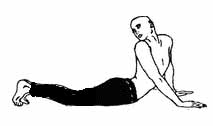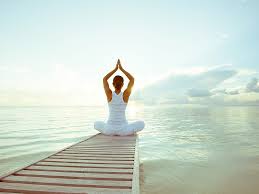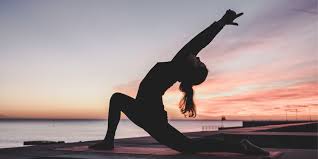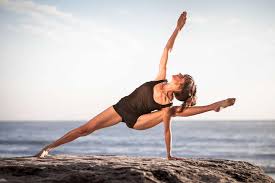Shankha Prakshalana – yogic practice of bowel cleansing (part 2)
 USEFUL “SIDE EFFECTS”
USEFUL “SIDE EFFECTS”
Many diseases are directly or indirectly associated with the accumulation of toxic waste in the intestines. Shankhaprakshalana removes all contaminants from the digestive tract and thereby helps cleanse the circulatory system. This leads to an amazing and very noticeable improvement in overall health, and also helps to get rid of specific ailments. In particular, shankhaprakshalana was useful in the treatment of allergies, diabetes, high acidity, constipation, dysentery, and many other diseases associated with unclean blood – for example, acne and furunculosis. The procedure also has a choleretic effect, cleanses the liver.
Those who feel good can also do shankhaprakshalana, because it can improve their health, allowing them to feel easier, more fun, and enjoy life more. In addition, it will help them think more clearly (again, through improved nutritional quality of blood flowing to the brain).
Thus, Shankhaprakshalana cleanses the whole body, improves the health status of the whole organism.
There are no medicinal or other methods (except for prolonged fasting) that can equally thoroughly clean the small and large intestines.
TECHNICAL DETAILS
(Attention, the description of the technique is given schematically for a general idea. For a detailed and step-by-step algorithm of the practice, it is necessary to use other sources.)
A couple of days before the practice, you need to prepare: do not eat heavy and protein foods.
The best time for conducting the practice is from 5 to 7 in the morning, when the activator is the meridian of the large intestine. The time from 7 to 9, when the stomach meridian is ative, is also suitable. The next most favorable time from 13 to 15 hours is the small intestine meridian. However, we do not forget that the silos should be done on an empty stomach, which means that waiting until 13.00 can be uncomfortable.
So, we need salted warm water – warm (room temperature). The recommended salinity in different sources is different: somewhere they advise 1 large tablespoon of salt per liter. In other sources (Artem Forolov book “Herbs for Yogis”): 1 teaspoon with a slide per liter of water. You can experiment, but in any case, DO NOT exceed a tablespoon per liter per liter. This is maximum.
Now salt. You can use ordinary stone or sea, refined. I personally like the second option (it’s more familiar to her taste). DO NOT use iodized salt and other salt variants with various “additives”. Why do we need unexpected side effects?
We drank a couple of glasses of water, we begin a series of exercises that help push water through the digestive tract, create the necessary compression, stretching in the intestines – salt water acts like a “brush” that sweeps toxins from the intestines, while NOT absorbed into the blood. In addition, a unique effect arises when, due to the difference in osmotic pressure, a reverse flow of fluid from the blood to the intestine occurs (in the usual mode, absorption occurs from the intestine into the blood).
Intestinal villi are rich in capillaries, through which beneficial (and, unfortunately, not useful) substances from processed foods are absorbed into the blood. I came across the opinion that when a reverse fluid flow occurs, microvilli of the small and large intestines are cleaned, and they really need it, because various folds of food can linger in the intestinal folds and villi for weeks and months. Artyom Frolov in the book “Herbs for Yogis” also writes that the practice of ShP allows you to literally “wash away” the established negative pathological reflexes in the intestine: spasms of certain areas, chronic lethargy or excessive activity. This is a real restart for the metasympathetic nervous system.
Passing through the intestines, salt water acts as a lubricant, softening the stool, helps its evacuation. Unlike enemas, praxalana cleanses not only the large intestine, but also the small one. The main difference and advantage over laxatives is that there is a reverse absorption effect, which purifies the blood and intestinal villi at the roots. In addition, the effect of laxatives is based on the artificial stimulation of nerve endings in the intestine, as a result of which the peristalsis (wave-like contraction of the intestine) intensifies, quickly pushing the stool to remove them from the body. Although this cleanses the intestines, at the same time, with regular use it leads to a gradual weakening of nerve reflexes. That is, laxatives bring short-term benefits, but over time they can lead to harmful consequences for the organism – in particular, atrophy of the gastrointestinal tract.




